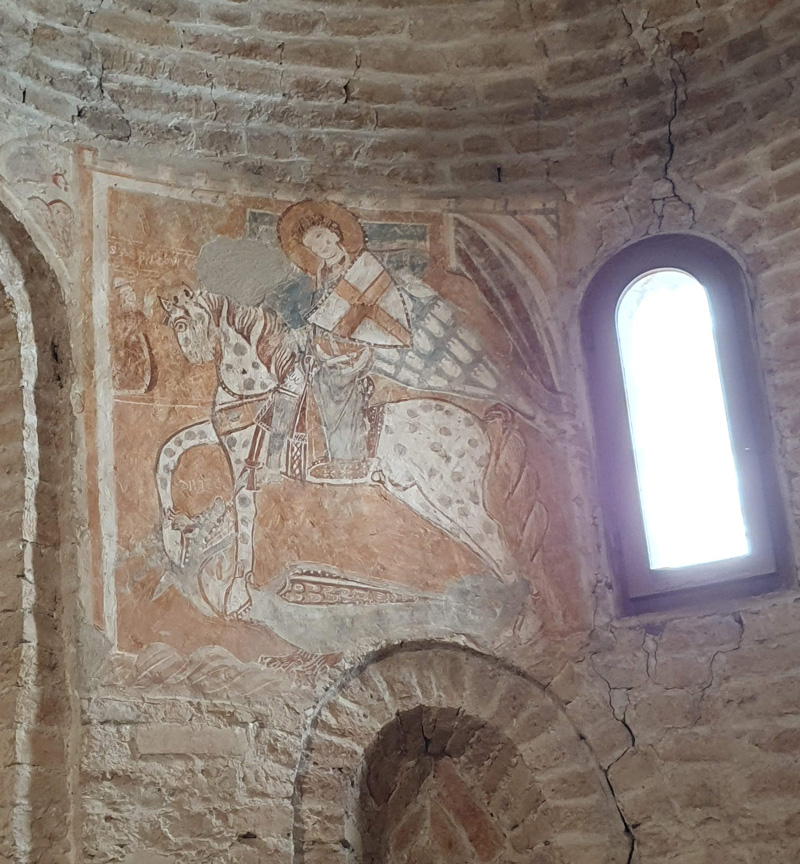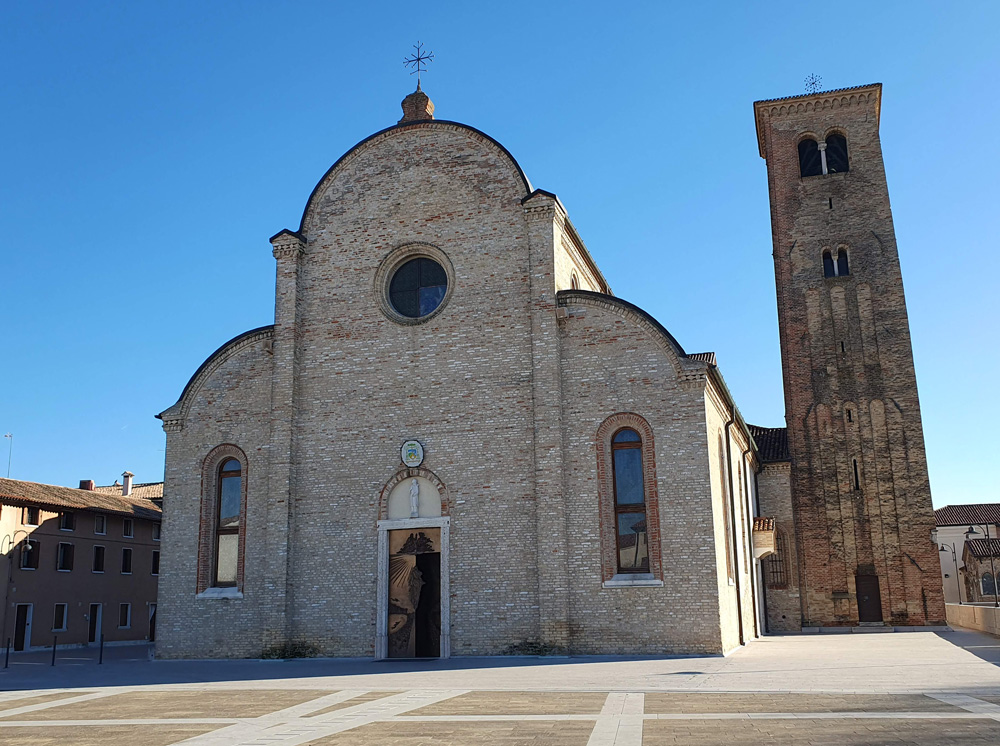On the site of Roman colony Iulia Concordia, modern-day Concordia Sagittaria is a small town (population 10,000) very close to the attractive, larger Portogruaro in the north-eastern part of the Veneto region, between Venice and the border with Friuli-Venezia Giulia. Not a famous or much-visited tourist attraction, Concordia Sagittaria is nonetheless very worth visiting for its three principal sights: an archaeological site, the cathedral and a beautiful little baptistery dating to the eleventh century.
I’d suggest combining a visit to Concordia with neighbouring Portogruaro. Archaeological finds from Roman Concordia are housed in a museum in Portogruaro, and Portogruaro’s prosperity in later centuries means it is a more significant town than Concordia, with a fine historic centre that is a pleasure to explore.
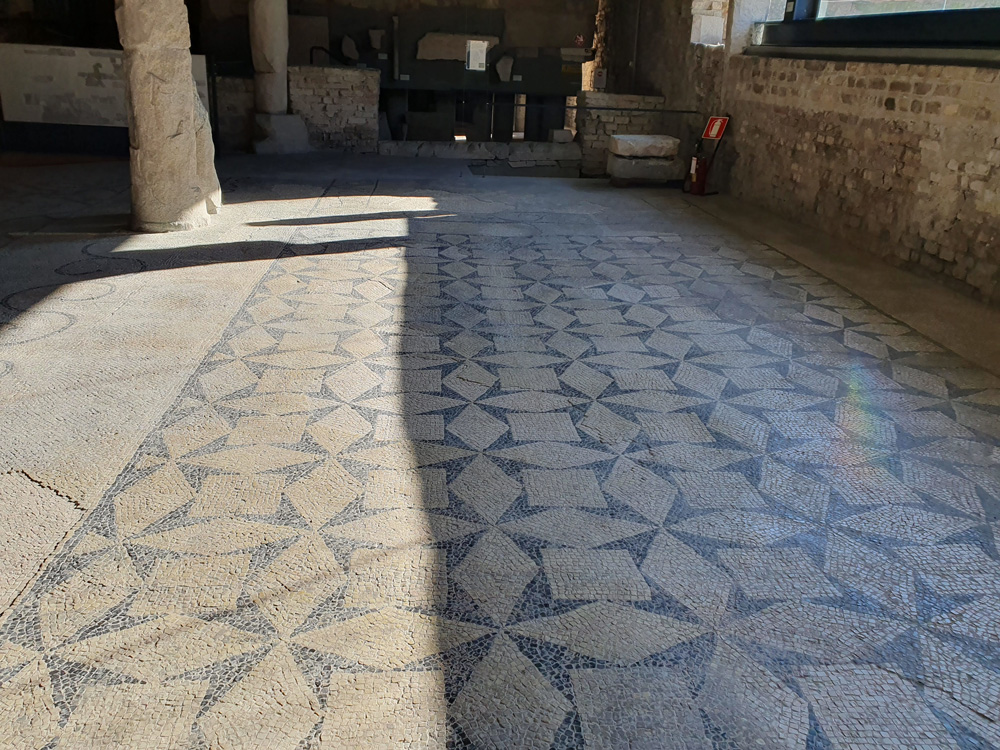
Get to Concordia Sagittaria
Concordia Sagittaria is straightforward to reach by public transport, though I’d recommend checking timetables in advance. A bus (line/linea 2) runs from Portogruaro railway station to seaside resort Caorle, and this stops opposite the cathedral in Concordia after about ten minutes. Buses are run by ATVO; there is a ticket office outside the train station, to the right as you leave the station building, where you can buy tickets and pick up timetables. Rows of numbered stops are alongside. Buses on this route were roughly hourly when I visited in winter; summer timetables are likely to offer more frequent services.
For drivers: Concordia is a short distance from the A4 autostrada between Venice and Trieste; take the exit for Portogruaro.
An appealing riverside path connects the two towns of Concordia Sagittaria and Portogruaro for a more leisurely walk or cycle ride. And if you are staying in the area, other local destinations to discover include seaside Caorle, 25km away and on the same bus route.
Read more about Portogruaro and how I combined these two towns in a day trip from Venice
A bit of history
The Roman colony of Iulia Concordia was founded around 42BC at the convergence of two roads heading to Aquileia, the Via Annia and the Via Postumia. The site had been inhabited in earlier centuries; it was a stategic spot with fertile land around, sea access nearby and a river port already in use. Tombs and inscriptions preserved in the archaeological museum in Portogruaro are a record of some of the residents of Roman Iulia Concordia: centurions, public officials, a family of butchers, and slaves. There was an arsenal here, and an arrow-making industry.
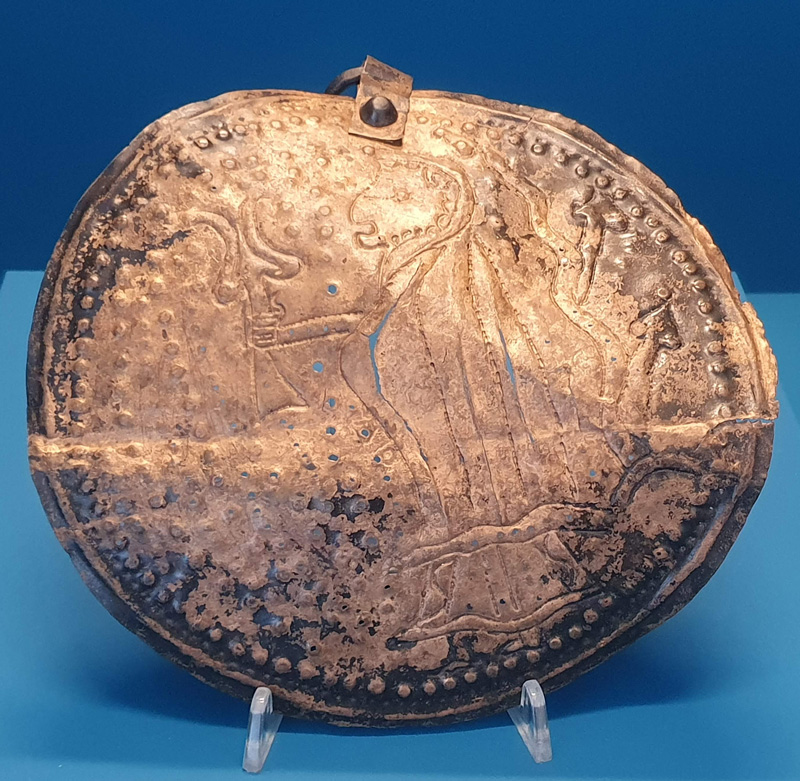
Christianity spread through this part of Italy by the 4th century AD (Aquileia, further to the east, being the most famous local site from this era). A Paleochristian (early Christian) basilica was built in Iulia Concordia at the end of this century, and there is still a cathedral on the site today, while the ruins of the earlier building can be visited.
Over the centuries, successive waves of raiders arrived in this area; Attila the Hun burned Iulia Concordia in 452 AD. As residents of the Veneto plains fled to safer lagoon islands, and the relative importance of local settlements shifted, the town declined in importance. With building materials removed for re-use, and suffering repeated flooding, the Roman town disappeared.
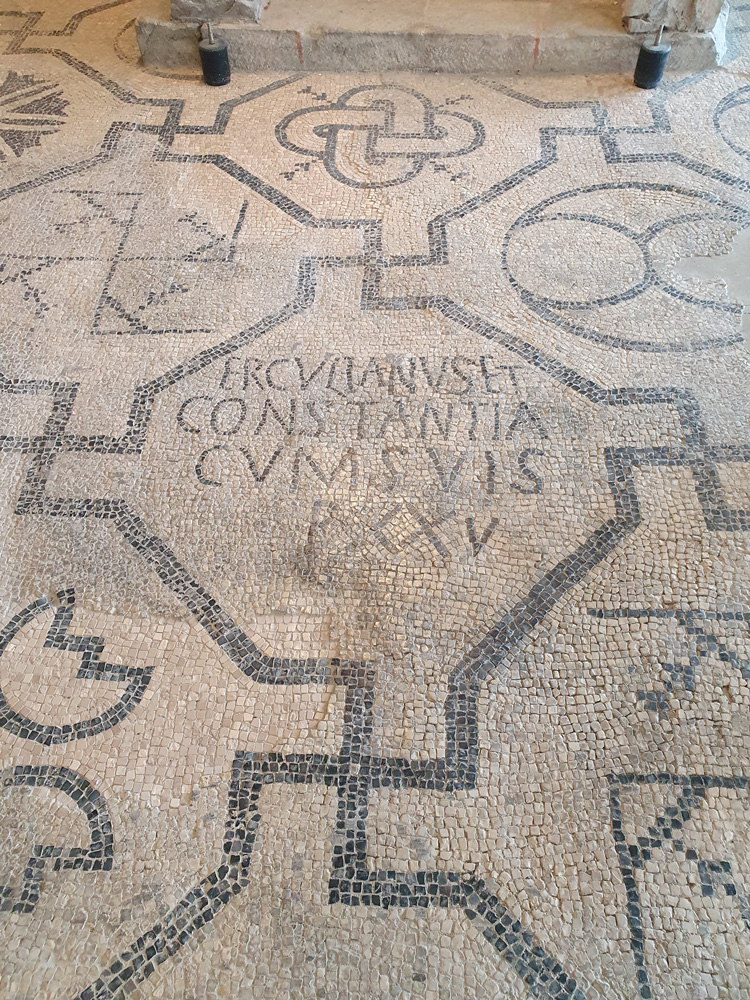
However, the Christian complex retained importance. A medieval cathedral was built, and a Romanesque baptistery. The bishops eventually moved their seat from Concordia, as it was now known, to Portogruaro and then on to Pordenone; but the church here kept its status of cathedral.
In the nineteenth century, with interest in the past growing and excavations uncovering its history, the town was renamed Concordia Sagittaria to record its Roman past, ‘sagittaria’ relating to the arrows manufactured here. Though present-day Concordia Sagittaria is a quiet town and somewhat off the beaten track, its little cluster of religious buildings and ruins are a compelling reminder of its history, along with the archaeological finds conserved in the nearby museum, founded in 1888.
Tourist sights
The most magical sight in Concordia, for me, was the eleventh century baptistery. An absolutely delightful little building in Romananesqe-Byzantine style and to a Greek cross plan, this is nestled alongside the cathedral. When I visited, the building was left open all day; visitors could just push the door and walk in. The interior is a surprisingly light-filled and airy space: arches, exposed brickwork and the jewel-like colours of frescoes dating back to the end of the eleventh or beginning of the twelfth century. The frescoes are damaged and fragmentary, but are utterly charming, and the experience of walking through the doorway as the church bells chimed midday and finding myself surrounded by this small world of art and history was a memorable moment.
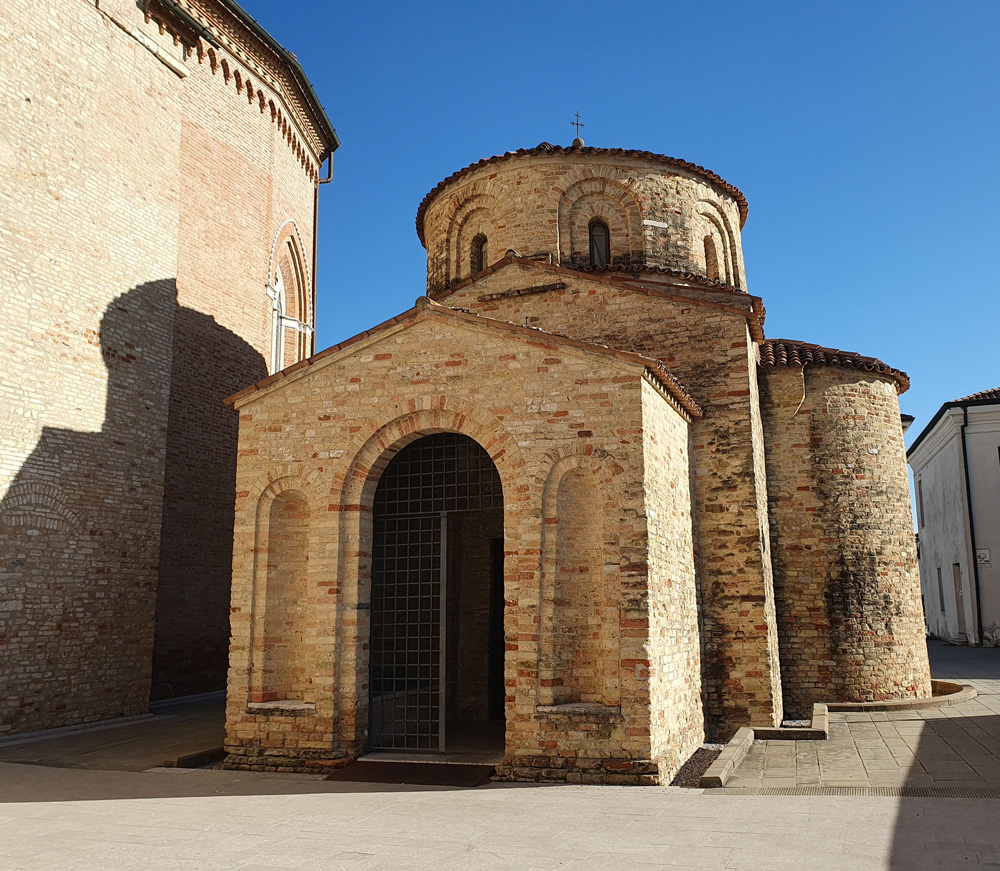
In the dome is Christ Pantocrator along with angels against a faded starry background. Beneath are saints and the Evangelists with their symbols, including St Mark with a rather fetching lion. One of the larger images on the walls shows St George on horseback fighting the dragon.
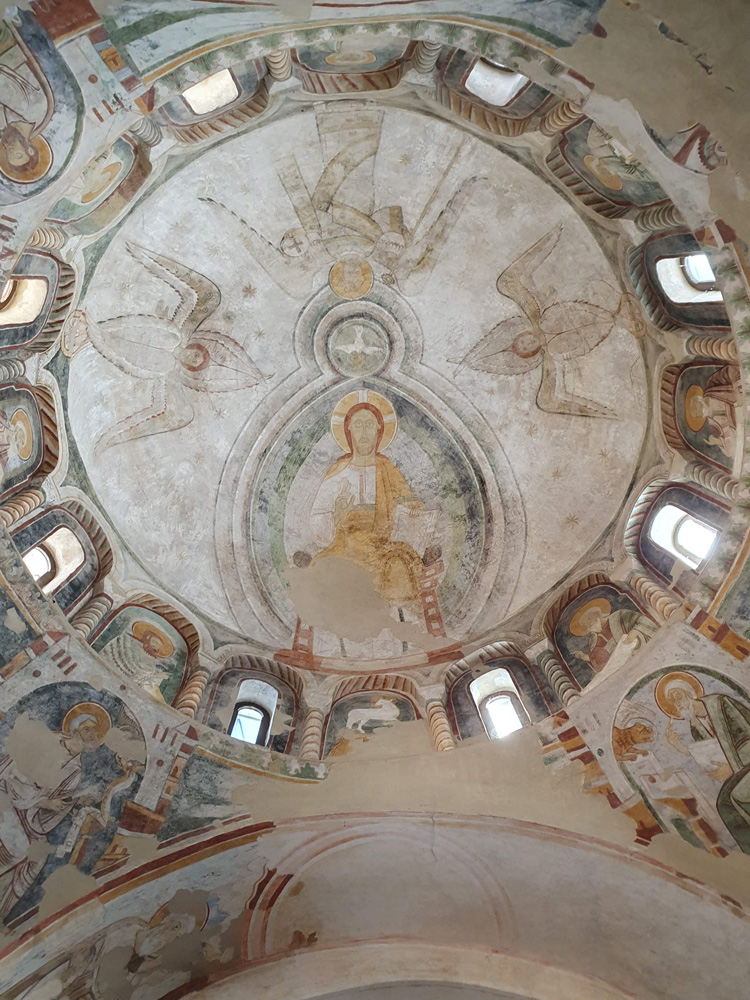
The large cathedral itself, on Piazza Costantini, is dedicated to Santo Stefano Protomartire (St Stephen). After earlier edifices were burnt by the Huns and destroyed in floods, the present-day building was built in the fifteenth century, with alterations and additions in the late nineteenth and early twentieth centuries.The Romanesque belltower dates to 1150. The interior is fairly simple and austere, with historical art and artefacts integrated appealingly with modern features. By a column close to the main door, the holy water stoup is made from an ancient garden fountain. Fragments of fresco are displayed on the walls, while the baptismal font, pulpit and an altar all incorporate sculpted marble from earlier incarnations of the church.
The Martyrs’ chapel houses the relics once venerated in the oldest Christian buildings alongside. These were renowned for exuding holy liquid. Another of the church’s treasures in this chapel is a painting by il Padovanino. The modern doors of the church are also works of art that catch the eye.
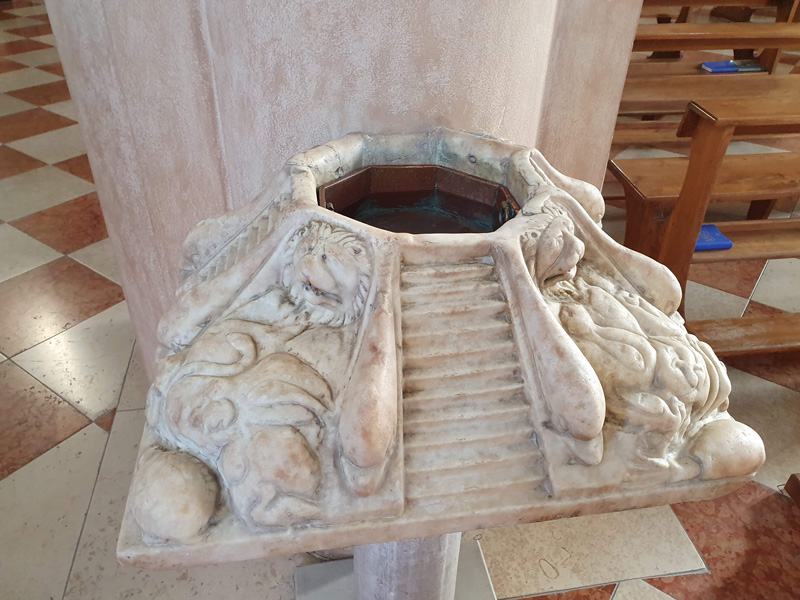
From the piazza outside the cathedral you can look down onto the archaeological area where the building’s earlier incarnation is visible and can be visited.This site includes Roman remains and what is left of the early Christian building complex, dating to the fourth and fifth centuries AD. Entrance is through a small ticket office building which also houses a few finds from the area, and can provide information, leaflets etc. Admission tickets are for combined entrance with the archaeological museum in Portogruaro (Museo Nazionale Concordiese); you can also buy tickets including entrance to the museum in Altino, nearer to Venice. Check opening times before you go; this information page covers both the archaeological zone and the museum in Portogruaro: Area archeologica Concordia Sagittaria.
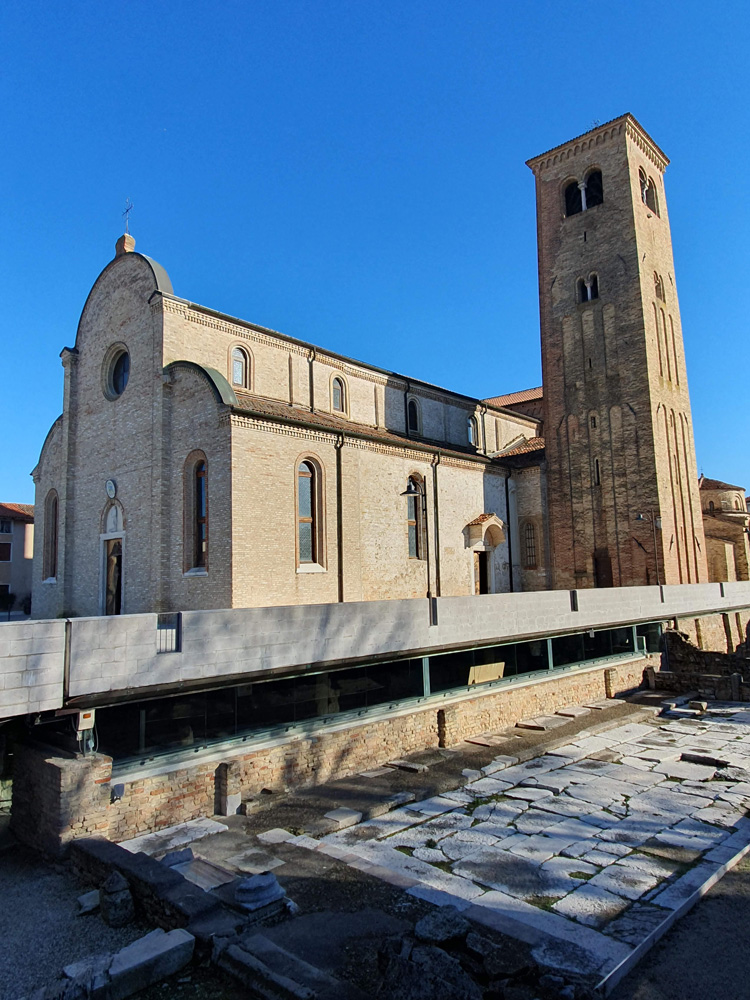
It’s definitely worth visiting the archaeological site. The area excavated extends under Piazza Costantini and the cathedral. You can walk through this historic subterranean space over mosaics and trace the layout of the early Christian basilica built over earlier Roman buildings. Standing in the open alongside is the ruin of the earliest sanctuary, the martyrium, built to house relics of local martyrs killed c.304 in Diocletian’s persecutions of Christians. A short stretch of the ancient Via Annia is exposed, too, with marks of wear from wheels.
Highlights include the variety of mosaics in the early basilica, including the names of donors who funded the work. The finely decorated sarcophagus of one of these wealthy Christians, a woman named Faustiniana, is within an elaborate funerary chapel within the archaeological area
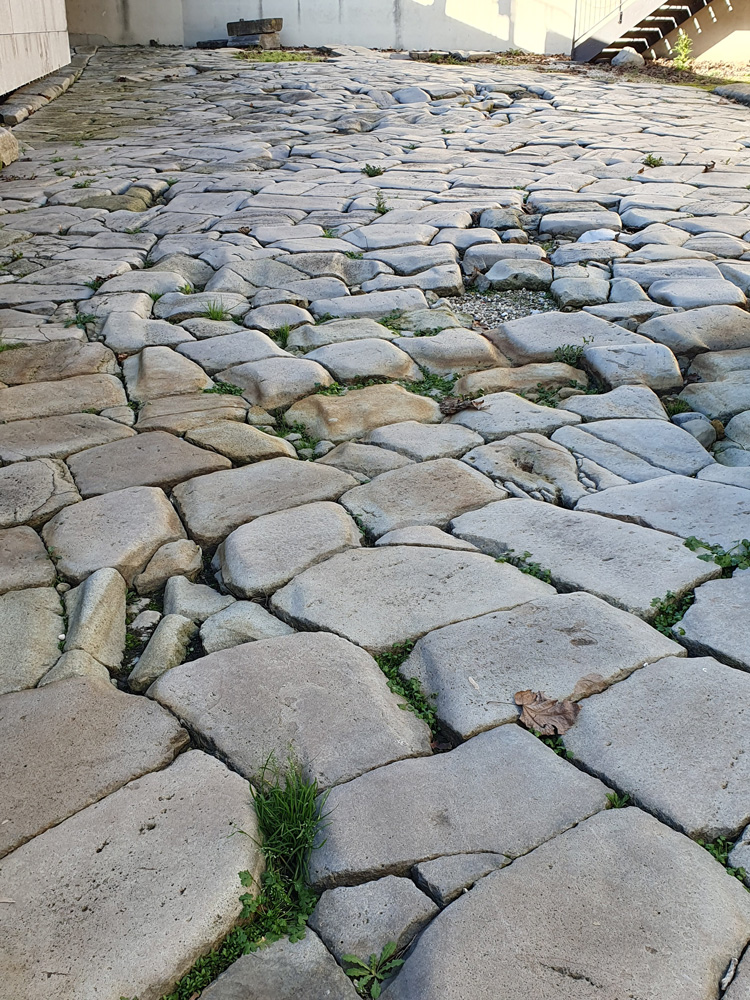
Up at street level and back outside the ticket office, a pedestrian route, Vicolo del Giubileo, leads past the excavations, with more mosaics displayed along its walls. This path opens onto an attractive piazza between the cathedral and the wide river Lemene, a welcoming space with café tables and a water feature. The Roman road behind and the river in front of you illustrate the features that made this location so strategic back when Iulia Concordia was founded.
The Palazzo Municipale (town hall) looks over the Lemene, its loggia sheltering more Roman archaeological finds, including a monumental double tomb with two sarcophagi. Inside the building is a small local archaeological collection, with limited opening times (at the time of writing, open twice daily at weekends – check the Concordia Sagittaria council website for latest hours).
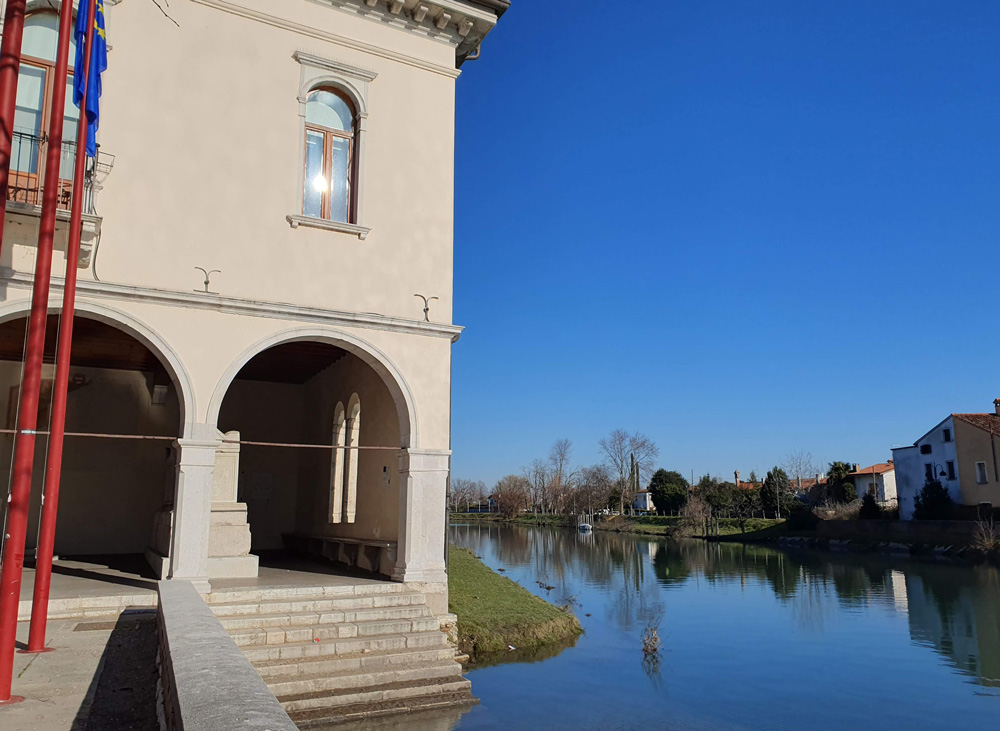
Outside the town hall is a white marble statue, with a convenient drinking water tap. A copy of an original sculpture by local cardinal, sculptor and writer Celso Costantini, it represents one of the workers who were responsible for reclaiming and improving the marshy lands around Concordia; a tribute to the work put into the enterprise of improving land for agriculture, building and health. Costantini, whose career in the Church was illustrious and who has been put forward for sainthood, had a significant impact on the town, the cathedral and its art when a young priest in Concordia, and the piazza in front of the cathedral is named after him.
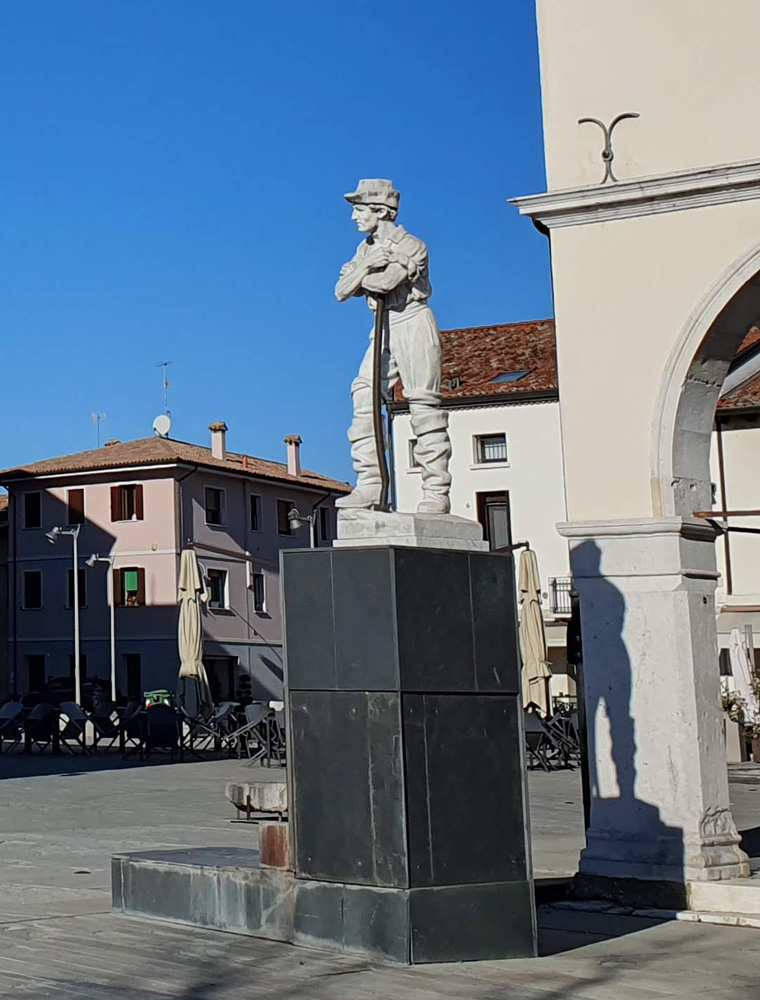
If you have more time to spend here in Concordia, there are other archaeological sites to find, though not as extensive or with admission to visitors – ask at the main site ticket office for advice and directions. On Via delle Terme are the ruins of the colony’s public baths; fragmentary frescoes from this site are now in the Portogruaro museum. Along Via San Pietro is the remains of a Roman bridge, over which the Via Annia crossed the river Reghena. Archaeological tour, in Italian (Soprintendenze Archeologia).
Stay around Concordia
There are some good accommodation options close to Concordia in Portogruaro, while other visitors to the area may prefer a longer stay by the sea in colourful Caorle. Scattered through the rural area and villages are also a number of rental villas and apartments, which may be another option for those prefering an independent stay.
While you can see most of what Concordia has to offer in a couple of hours, some visitors may find it a useful overnight place to stay on a journey, or a base for exploring the surrounding area by car or bike. The useful Portogruaro-Caorle bus route means you can see further afield by public transport too, perhaps spending an afternoon in Portogruaro and a day by the sea in Caorle.
Find accommodation in and around Concordia Sagittaria (affiliate link – thank you for your support)
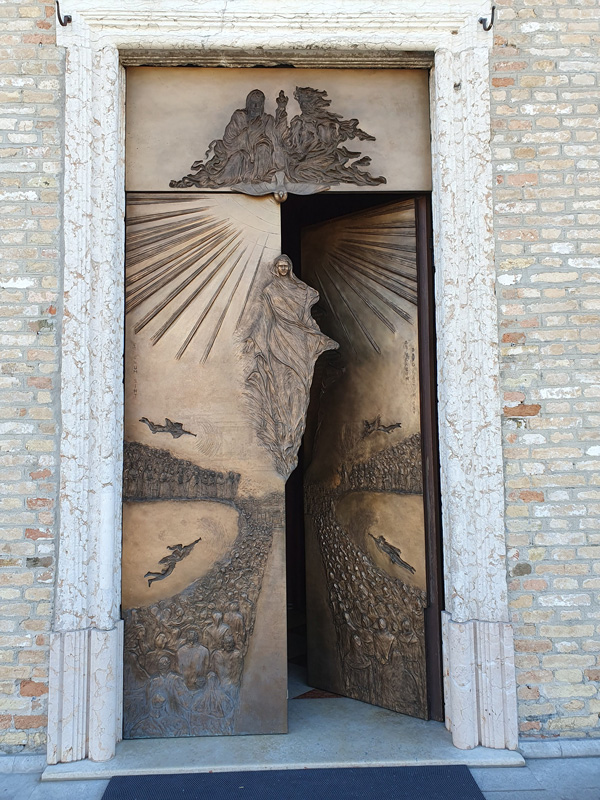
Veneto destinations
- Veneto region
- Abano Terme
- Asolo
- Bassano del Grappa
- Brenta Canal
- Caorle
- Castelfranco Veneto
- Chioggia
- Cittadella
- Concordia Sagittaria
- Conegliano
- Cortina d’Ampezzo
- Lido di Jesolo
- Malcesine
- Marostica
- Monselice
- Montegrotto Terme
- Padua
- Portogruaro
- Rovigo
- Sottomarina
- Treviso
- Venetian Lagoon
- Venice
- Verona
- Vicenza
- Veneto art & architecture itinerary
- Veneto villas – Vicenza: La Rotonda & Villa Valmarana ai Nani
- Veneto villas – Villa Pisani & Villa Foscarini Rossi, Strà
- Venice Airport
- Treviso Airport
